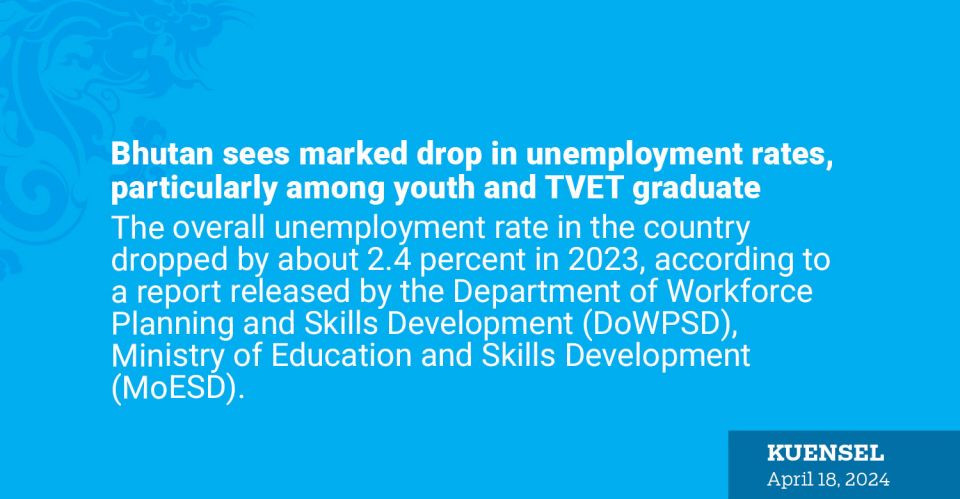
The overall unemployment rate in the country dropped by about 2.4 percent in 2023, according to a report released by the Department of Workforce Planning and Skills Development (DoWPSD), Ministry of Education and Skills Development (MoESD).
The drop from 5.9 percent in 2022 to 3.5 percent in 2023 marks a positive trend across genders and indicates improvement from the 4.8 percent recorded in 2021.
Youth unemployment, a key concern for the country, also saw a drop from 28.6 percent in 2022 to 15.9 percent in 2023, indicating a drop of 12.63 percent in 2023.
This achievement is a big achievement considering the 20.9 percent rate observed in 2021.
There was a commendable drop in female youth unemployment, from 32.8 percent in 2022 to 18.3 percent in 2023.
Another crucial improvement was the surge in employment among TVET graduates, rising from 7,085 in 2022 to 61,700 in the third quarter of 2023.
The overall employment rate among TVET graduates increased from 93 percent in 2022 to 94.3 percent in 2023.
However, the proportion of TVET-qualified workers remains low, constituting only 2.5 percent of the total employed in 2022 and 16.9 percent in 2023.
Despite efforts to enhance workforce skills, a large portion of the country’s labour force lacks formal education, with 33.1 percent having no education and 10.3 percent having bachelor’s degree and above, while only 2.7 percent possess TVET diplomas or certificates.
This education gap poses challenges such as a shortage of skilled workers, lower productivity and limited career advancement opportunities.
“A high percentage with no education means that a significant proportion of the workforce may not possess the necessary skills and knowledge required for jobs that require formal education or training,” the report stated.
To address the issue, the MoESD has set an ambitious target in the 13th plan to certify about 50 percent of the workforce in vocational and technical skills by 2029 and 80 percent by 2033.
Going by this target, an additional 93,000 individuals will need access to TVET and higher education by the end of the plan period.
Bhutan also faces disparities in education levels among its youth workforce, with 4.1 percent lacking formal education, and only 7.9 percent holding bachelor’s degrees or higher qualifications.
“It is a matter of concern, since access to education from primary to higher secondary levels is free in the country,” the report added.
The report highlighted that having a high proportion of the youth workforce with low levels of education means that they may not possess the necessary skills and knowledge required for many jobs that require formal education.
Such imbalances, according to the report, may restrict access to higher-paying jobs and limit career prospects for young workers in the future.
MoESD aims to provide TVET access to 40 percent of Class XII graduates after the National Gyalsung Programme.
However, achieving this goal may face obstacles in the coming years. Between 2024 and 2029, youth population is projected to decrease. This decline can be traced back to fewer births in the 1990s and a growing trend of young people pursuing educational and employment prospects overseas.












